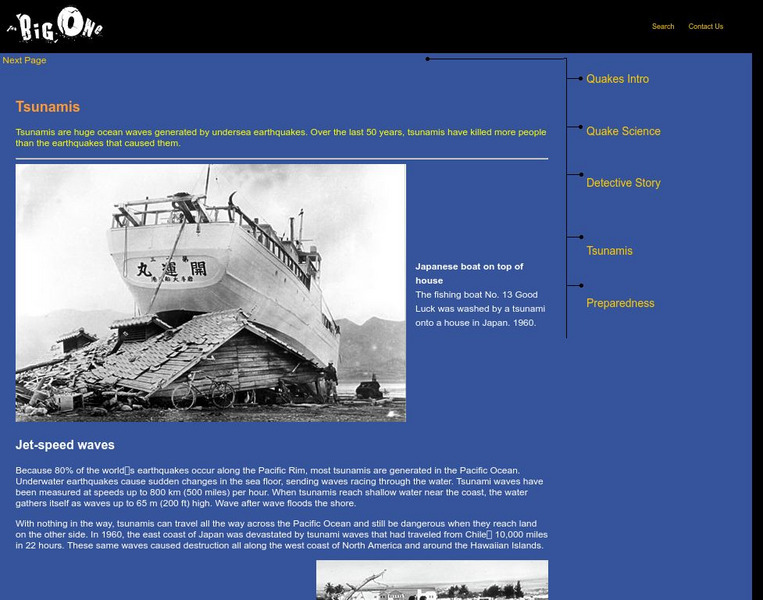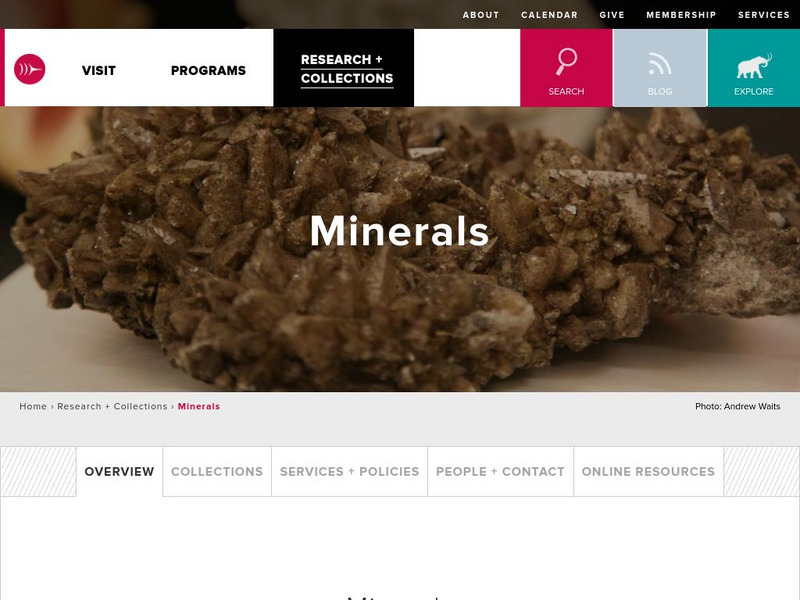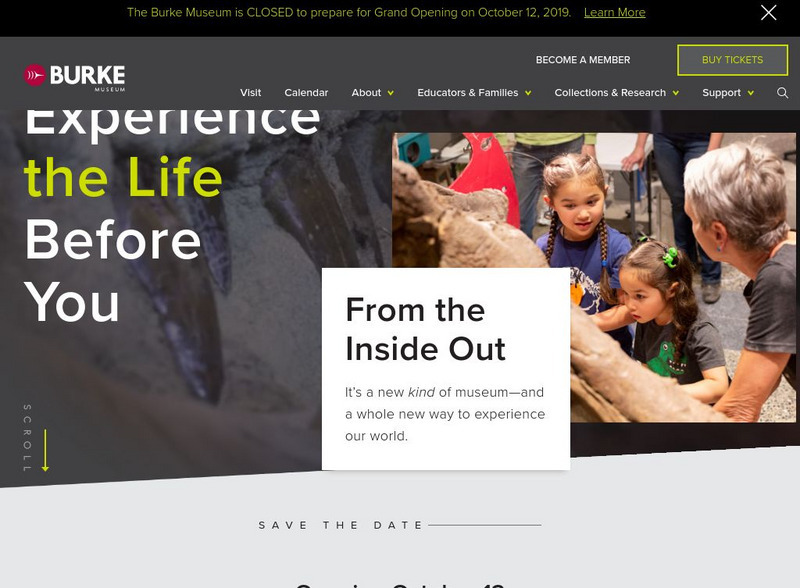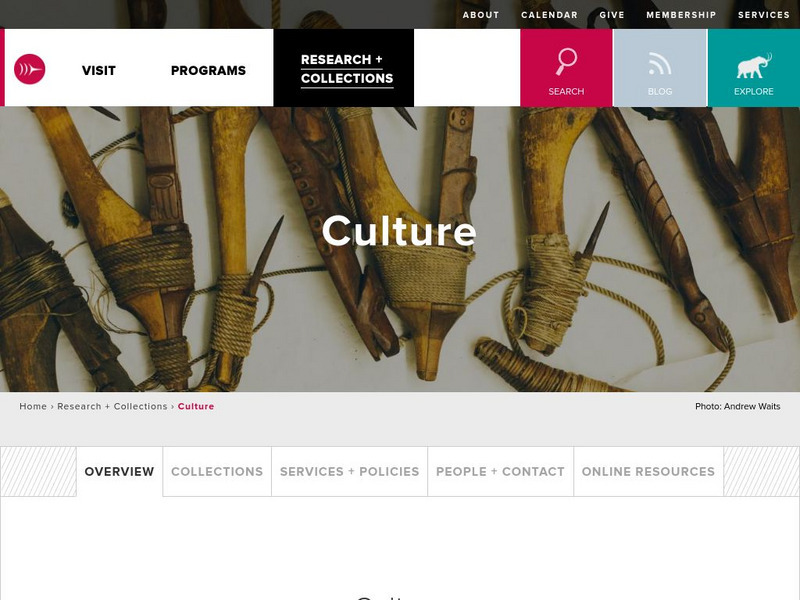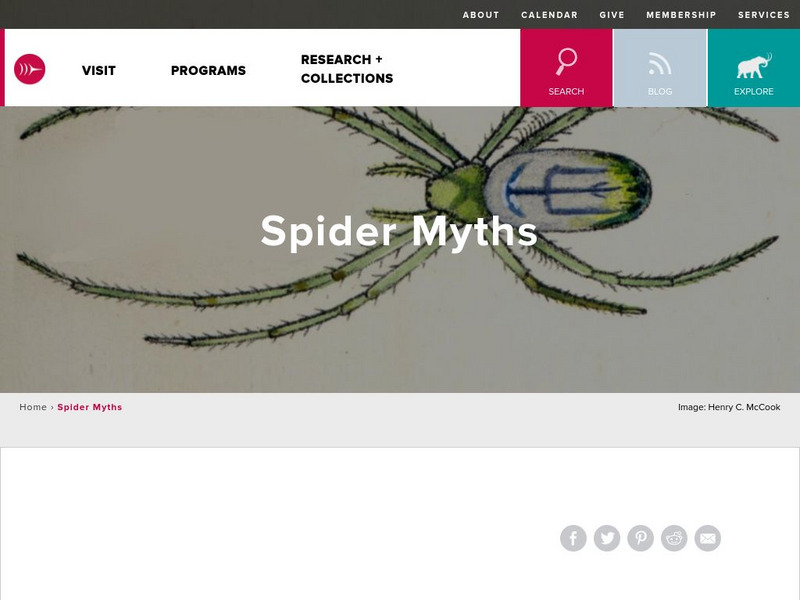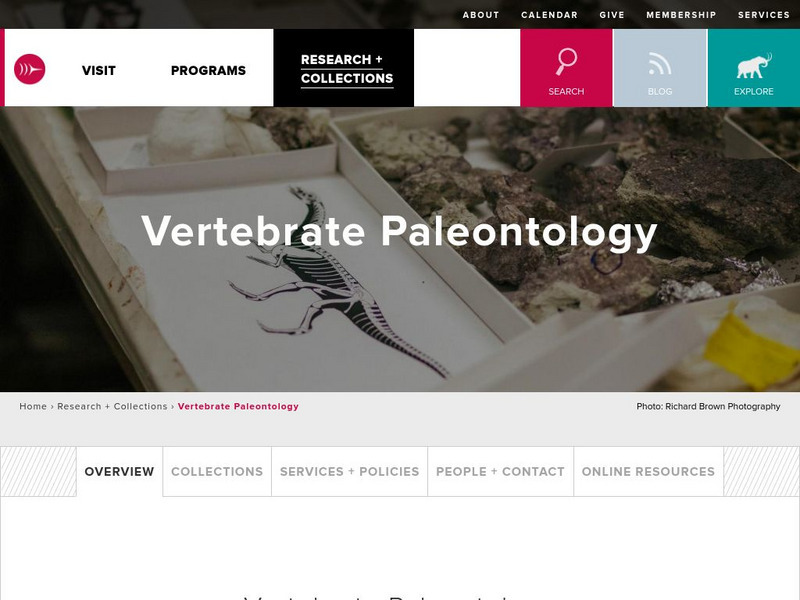Burke Museum
Burke Museum: The Big One
This is the introduction to the Burke Museum's online exhibit on earthquakes and natural disasters. This is part of the Burke Museum's collection of geology. Topics that are covered include an introduction to quakes, quake science, quake...
Burke Museum
Burke Museum: Tsunamis
The information on tsunamis provided at this site is part of the Burke Museum's online exhibition on earthquakes and geology. Prevention is discussed, along with famous tsunamis in history.
Burke Museum
Burke Museum: Archaeology
The archaeology research and collection section of the Burke Museum provides great information. The section is divided into three headings including research, collections, and people.
Burke Museum
Burke Museum: Research and Collections: Geology
Under the heading "Research and Collections," this site details the information on Geology provided by the Burke Museum. Four online geology exhibits are listed and can be accessed by link.
Burke Museum
Burke Museum: Arachnology
Arachnology, or the study of spiders and other Arachnida, is discussed here in the research and collection section of the Burke Museum. Other topics discussed include spider myths, research, and people.
Burke Museum
Burke Museum: Spider Myths
As part of the Burke Museum's section of research and collections centering on Arachnology, this site outlines several myths associated with spiders including identifying spiders, house spiders, and "weird" spiders.
Burke Museum
Burke Museum: Waterlines: Discover & Explore Seattle's Past Landscapes
Seattle is one of the most dramatically engineered cities in the USA. This rich interactive website enables people to see how Seattle's various landscapes have changed over time. The site starts out with an interactive map of the Puget...
Burke Museum
The Burke Museum of Natural History & Culture
The museum features online quizzes and exhibits like Kennewick Man, "Mammals of Washington," Amphibians and Reptiles of Washington," archeology, and vertebrate paleontology.
Burke Museum
Burke Museum of Natural Hist'y: Native American Basketry
This Native American basketry exhibition explores how baskets are entwined with the lives of people. You'll be surprised at the many uses these baskets had in the lives of the Native Americans.
Burke Museum
Burke Museum: Earthquake Science
This section of the Burke Museum's online exhibit on earthquakes and natural disasters focuses on the science of earthquakes. Topics that are covered include plate motion, heat, interior of the earth, and more.
Burke Museum
Burke Museum: Earthquake Preparedness
Part of the Burke Museum's online exhibition titled "The Big One" which focuses on earthquakes and quake science, this site looks at safety precautions to take when dealing with earthquakes.
Burke Museum
Burke Museum: Weird Spider Stories
This section of the Burke Museum's collection on Arachnology goes through a series of "weird" stories associated with spiders. Each myth is accessible by clicking on the corresponding link.
Burke Museum
Burke Museum: Archaeology Collections
Part of the archaeology research site at the Burke Museum, this page details the various collections available including the Bergen, the Stewart, the Hall, the Putnam, and the Cole Collection. Each collection can be accessed by clicking...
Burke Museum
Burke Museum: Identifying House Spiders
From the Burke Museum's collection of Arachnology comes this site which seeks to correct misconceptions associated with the identification of house spiders.
Burke Museum
Burke Museum: Paleontology Collection
In addition to further information on the study of Paleontology, this Museum collection site references over 2.75 million specimens of study available. A search key is provided along with detailed information.
Burke Museum
Burke Museum: Marine Fossils
"Marine fossils and their living relatives" is part of a larger site dedicated to the research and collection information of the Burke Museum on Paleontology.
Burke Museum
Burke Museum of Natural History and Culture: The Spider Myths Site
Are spiders insects? Do you really swallow spiders while you're sleeping? Myths and questions related to spiders are addressed on this site. Links to additional information can also be found here.
Burke Museum
Burke Museum: Dangerous Spiders
This site from the Burke Museum which is part of the collection of Arachnology from the Museum centers on correcting certain myths about so-called dangerous spiders. Scroll down to see the dangerous spider myths.
Burke Museum
Burke Museum: Paleontology
This collection of artifacts and information on Paleontology from the Burke Museum includes online exhibits and access to pictures from various collections.
Burke Museum
Burke Museum: Genetics
Part of the research and collections section of the Burke Museum, this site centers on genetics and studies tissue collected from both birds and mammals used for molecular research.
Burke Museum
Burke Museum: Birthstones: Myths and History
As part of the Burke Museum's site on Geology, this page details the birthstones for each month and discusses both the myth and the history behind birthstones.
Burke Museum
Burke Museum: Spider Identification
As part of the Arachnology section of the Burke Museum, this site corrects false conceptions associated with identifying spiders.



